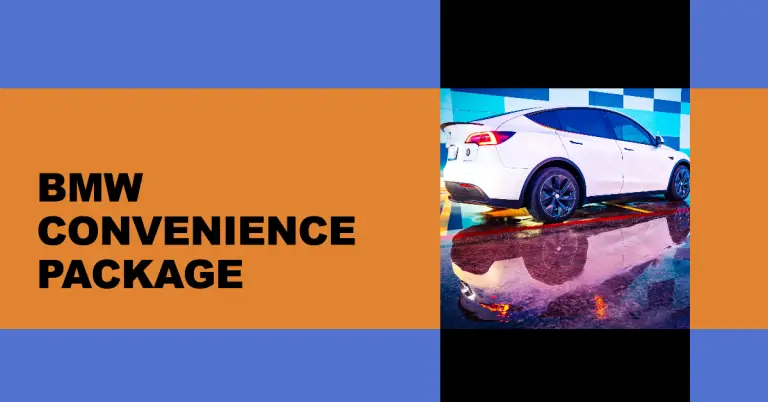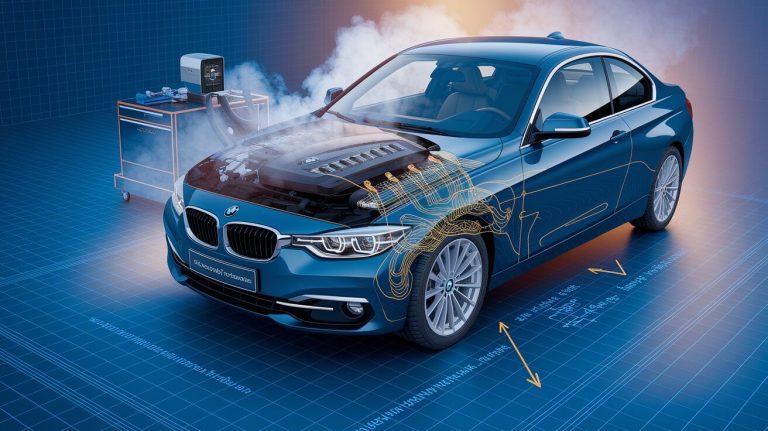What Does the EML Light Mean on a BMW?
If you own a BMW, you may have seen a confusing dashboard light pop up from time to time: the EML warning. This “engine management light” can signal anything from a loose gas cap to a major engine failure, so it’s important to understand what it means and how to react. This comprehensive guide will cover everything you need to know about the EML indicator.
What Does the EML Light Look Like?
The EML light has a standard appearance across BMW models. It shows an outline of an engine, similar to the check engine light found in other car brands.
Yellow or Amber EML
When the EML first illuminates, it will typically display as a yellow or amber color. This steady, non-flashing light indicates a minor issue has been detected. As long as the car seems to be running normally, it is often safe to continue driving while scheduling an inspection.
Flashing EML
A flashing or blinking EML points to a more serious problem. You may notice the engine running unevenly or losing power when the light is blinking. It’s best to pull over and have the car towed to a mechanic for diagnosis. Driving with a flashing EML can risk further damage.
Red EML
The most critical EML warning illuminates in red. A red light means you should immediately pull over and shut off the engine wherever it is safe to do so. Then call for roadside assistance, as the car should not be driven with this light on.
Locating the EML
The EML light is centered near the top of the instrument cluster, close to the tachometer. It will be within your line of sight without obstructing key stats like vehicle speed and engine RPM. Check your owner’s manual for the exact dashboard layout.
What Does “EML” Stand For?
EML is an abbreviation for “Elektronische Motorleistungsregelung” – quite a mouthful! This German name translates to “electronic engine power control” in English.
The EML light serves essentially the same purpose as a check engine light in warning of problems under the hood. BMW uses the unique EML term, along with their own engine outline icon.
Main Causes of the EML Light
Many different issues can trigger the EML indicator, ranging from minor to major severity. Here are some of the most common causes:
Oxygen Sensor Problems
The oxygen sensors monitor how much unburnt oxygen is in the exhaust. If they report irregular readings, it may indicate improper fuel mixture or combustion. Faulty oxygen sensors will activate the EML.
Mass Airflow Sensor Issues
Similar to the oxygen sensors, the mass airflow sensor measures the air to fuel ratio entering the engine. When this critical balance is off, the EML light can turn on. A damaged mass airflow sensor itself can also illuminate the light.
Faulty Spark Plugs or Coil Packs
In gasoline engines, failing spark plugs or coil packs can prevent proper ignition of the air/fuel mixture. The resulting misfires will trigger the EML. Replacing worn spark plugs typically resolves this.
Loose or Missing Gas Cap
A loose fuel filler cap allows fuel vapors to escape the tank, reducing pressure. The “cap off” sensor will detect this issue and flip on the warning light as a result. Checking for a loose gas cap is one of the first steps when diagnosing an EML light.
Clogged Fuel Pump
Over time, debris and sediment can block the fuel pump, preventing it from delivering sufficient fuel pressure to the injectors. The lean fuel mixture causes rough running and illumination of the EML.
Damaged Catalytic Converter
Your catalytic converter processes toxic exhaust emissions to make them less harmful. But problems like an exhaust leak can damage this emissions equipment and turn on the EML light. Repairing or replacing a faulty catalytic converter should resolve this.
Blocked Diesel Particulate Filter
Modern diesel cars have a DPF that captures soot and must periodically burn it off through regeneration. A blocked DPF that can’t properly regenerate will indicate issues through the EML and other warning lights.
When Should You Pull Over?
Knowing whether you can safely drive or need to immediately stop when the EML appears depends on the light’s behavior:
Steady Amber EML
A steady, non-flashing amber or yellow EML means you can likely keep driving at a reduced speed while heading to the nearest repair shop. Use caution and be alert to any changes in engine performance.
Flashing or Blinking EML
Pull over right away if the light begins blinking. Do not drive the vehicle. The blinking indicates a severe misfire or loss of power. Call for roadside help to have the car towed.
Red EML
A red EML is an emergency situation – carefully pull off the road where it is safe and turn off the engine. Do not attempt to restart or drive the car. Have it towed to the nearest BMW repair center.
How Serious Is the EML Warning?
The EML can illuminate due to minor problems like a loose gas cap. But it can also reflect serious issues that may leave you stranded if left unattended.
Minor Engine Issues
On some occasions, the EML may come on due to small problems like deteriorating oxygen sensors or minor emissions equipment failures. Addressing these early on prevents more extensive repairs down the road.
Major Internal Damage Risk
A blinking or red EML, especially with a loss of engine power, indicates major issues like misfires or component failure. Driving with these warning signs risks internal engine damage. Have the car towed to the shop immediately.
Most Urgent Warning Levels
A blinking/flashing EML and bright red EML light represent the highest severity warnings. These signals require promptly pulling over and shutting off the engine to avoid potentially irreparable damage.
How to Diagnose the EML Light
Diagnosing the cause of your BMW’s EML can be done in a few different ways:
Read EML Error Codes
The EML light is tied to your car’s onboard computer system. When it turns on, it logs OBD2 trouble codes that mechanics can analyze. Auto parts stores can often scan these codes for free.
Use an OBD2 Diagnostic Scanner Tool
For DIY diagnostics, an OBD2 scanner tool lets you access EML error codes. Advanced scanners can provide code definitions and diagnostic tests. This helps narrow down the issue.
Take It to a Professional BMW Mechanic
A BMW specialist has the training, diagnostic technology, and experience to efficiently diagnose EML causes. Their expertise saves time and troubleshooting guesswork.
How to Reset the EML Light
Once the underlying problem triggering the EML has been resolved, you will need to reset the light. Here are a few resetting approaches:
Turn Off and Restart the Ignition
After fixing a minor issue like topping up low fluids, turning the ignition fully off and back on may clear the EML light. Drive for 10-15 minutes and see if it remains off.
Disconnect and Reconnect the Battery
Disconnecting the battery briefly can also reset engine management systems and turn off the light. This is more effective than just restarting the ignition.
Use an OBD2 Diagnostic Scanner Tool
OBD2 scanners have an EML reset function once repairs are complete. This relearns and resets emission monitors to gracefully turn the light off.
Drive and Let the ECU Reset Itself
Given enough drive time (sometimes hundreds of miles), the engine control unit will eventually reset itself and turn the light off if issues are fixed. But forcing an immediate reset is better.
EML Light and MOT Failure
The EML light illuminates due to emissions or engine issues. So it comes as no surprise that it leads to an automatic MOT emissions test failure in the UK.
Any EML Light is a Fail
If the EML indicator is illuminated at all during an MOT test, it results in an instant emissions failure. The underlying problem will need to be diagnosed and repaired before retesting.
Cannot Pass Emissions with EML On
No matter how minor the issue, the MOT tester cannot provide a pass result if the EML light is on. You’ll have to address the cause and turn the light off before the car can pass emissions.
Repair First, Then Retest
Getting a clear MOT certification requires you to first fix whatever is causing the EML activation, from oxygen sensors to catalytic converter damage. With the light off, the car can then pass emissions.
When EML Light is On With Limp Mode
Limp mode activates when BMW’s engine computer detects severe issues, reducing power to protect the engine from catastrophic failure. The EML light accompanying limp mode means you should stop driving right away.
Limp Mode Reduces Engine Power
When limp mode engages, engine speed is limited to around 3000 RPM or less. The car will dramatically lose speed and acceleration capacity to avoid taxing damaged components.
Protects Severely Damaged Components
By limiting performance, limp mode aims to let you safely drive a short distance to have repairs completed. It prevents broken parts like pistons or bearings from failing altogether.
Stop Driving and Call for Help
Pull over immediately if limp mode and the EML activate simultaneously. Continuing to drive risks major engine damage. Call for roadside help and have the BMW towed to the shop.
Preventing EML Light Problems
While even well-maintained cars can suffer occasional EML hiccups, you can reduce odds of issues through:
Regular Service Intervals
Follow your BMW’s maintenance schedule for oil changes, fluid flushes, spark plug replacement, and emission system inspections. This prevents premature part failures.
Tracking Dashboard Warning Lights
Monitor your dashboard diligently, and understand what all the warning symbols mean. Addressing small problems early is much cheaper than waiting.
Making Repairs Quickly
Never ignore a warning light. Diagnose codes immediately and complete recommended repairs. The longer you wait, the more likely additional damage occurs.
Call Roadside Help for a Red or Flashing EML
While a yellow EML may allow you to carefully drive to the nearest shop, severe EML warnings require immediate assistance:
Red EML Light
A red EML that stays illuminated indicates a critical failure risk. Safely pull over, turn off the engine, and call for a tow truck.
Flashing EML Light
Similarly, a blinking or flashing EML requires shutting the engine down where possible and contacting help to transport the BMW for diagnosis.
Severe Power Loss
If limp mode engages alongside the EML, accompanied by extreme power loss, you likely have an urgent major mechanical issue. Don’t attempt to push on – call for help.
Conclusion
The EML engine management light in your BMW alerts you to issues ranging from minor to major severity. While a steady amber EML may not require immediately stopping, warning signs like blinking, red, or a loss of engine power mean you should pull over and call for assistance without delay. Diagnose codes promptly, make necessary repairs, and reset the EML to resolve the underlying problem. With a diligent eye and quick action, you can keep your BMW running reliably and pass emissions tests worry-free.







